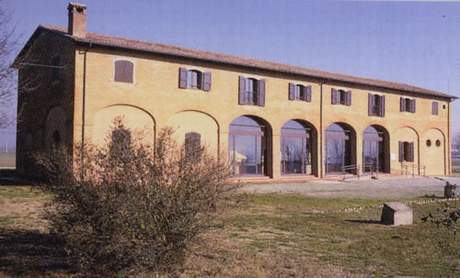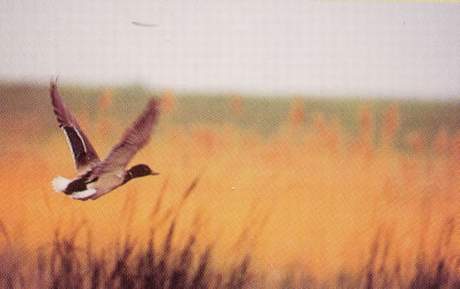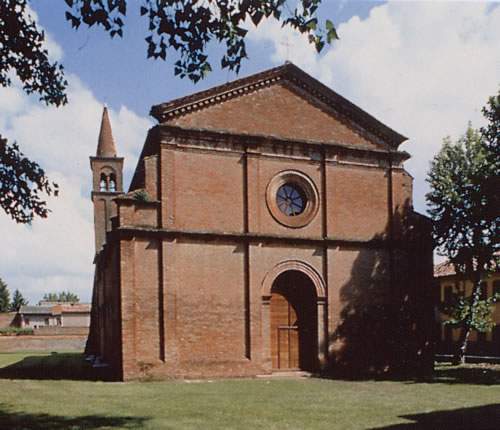|
Argenta foundation goes back to roman time or a little later. His name seems to derive from silver reflections on humid ground and of waters that in the ancient times surrounded it. Since origins Argenta depends on Ravenna's diocese and, about X - XI century she known a period of great glory thanks to its river port on Po of Primaro, now called Reno.
From XII century Estensi dukedome wanted the control on the city and so Pope Clemente VI gave it in leasing during 1344 and Estensi kept it till Alfonso II's death in 1597 when the whole Ferrara dukedome was transferred to Pontifical State.
Inhabitants of Argenta fought during Indipendence Wars with hundreds of volunteers: the prevalent personage of this period was the lawyer Giuseppe Vandini, that was the first mayor of Argenta after national unification. During the Second World War Argenta was seriously damaged by the British Army.
After post-war period Argenta developped, particularly in the last 15 years. Between the most important economic activities we want to remember agriculture, building trade, working plastics, commerce of vegetables and wicker or rush objects. In Argenta we have a large market on Thursday and a beautiful Fair in September, apart from theatrical performances and cultural initiatives.
 ECOMUSEUM: The modern concept of "ecomuseum" has its origin back in the '70s in France with the notion of musée éclaté. This term clearly expresses the idea behind it, which is a type of museum that goes beyond architectural bounds and that, by englobing the surrounding territory and socio-cultural background, opens a channel of communication with external reality. The ecomuseum of Argenta is composed of three museums and a natural site: the Museum of Marshes, the Museum of Reclaimed Land, the Civic Museum and the Oasi of Campotto. ECOMUSEUM: The modern concept of "ecomuseum" has its origin back in the '70s in France with the notion of musée éclaté. This term clearly expresses the idea behind it, which is a type of museum that goes beyond architectural bounds and that, by englobing the surrounding territory and socio-cultural background, opens a channel of communication with external reality. The ecomuseum of Argenta is composed of three museums and a natural site: the Museum of Marshes, the Museum of Reclaimed Land, the Civic Museum and the Oasi of Campotto.
The Museum of Marshes is placed in the former shooting lodge of Campotto, 4 chilometres far from Argenta town; it's a historical and natural documentation centre. It houses both the organizational and visiting centre of ecomuseum of Argenta, as well as the center of the Regional Park of the river Po Delta for all that concern services, informations, reservations and guided visits. It also performs such tasks as tourist orientation around the area. Thanks to its peculiar communicative and educational system, in 1992, it has been awarded the prize "European Museum of the Year" by European Commitee.
Outside is situated the educational little lake, wich puts together and reflects all the different elements of the surrounding natural envirinment, Furthermore, in the museum's courtyard you can find a parking area as well as a sort of former shooting-box, where lectures and seminars are held to discuss certain topics in depth through the teaching instruments that the museum puts at the visitors' disposal. Finally, at the end of this a coffee break is also arranged.
Built between the end of the 18th and the beginning of the 19th century, the structure that houses the museum was originally a farmhouse of three floor, the original ground floor has been buried as a result of land reclamation that lifted up the level of soil.
On the actual ground floor the following facilities are available: the reception, the museum's lobby where are displayed some cartographical representations of the Oasi and where the bookshop is also situated, the meeting room, the historical section and the demonstrative plastic model showing the functioning of mechanical reclamation; on the upper floor there are the Room of Sounds, which offers the "Concert of the Marshes", a video that gives the opportunity to watch and listen to both images and sounds of the Oasi, with picture of birds and their solo and polyfonic singing; the Naturalistic Section offers a series of illustrated panels on the flora and fauna of the Oasi: these panels tell us about the route of migratoty birds and their food, they also illustrate the height at which each species of birds nests and obviously all that can be seen in the Oasi (all these instruments are supported by dioramas and water and land environments models that faithfully reconstruct the natural wetland; the Laboratory, finally, supplied with microscopes is made available to allow visitors, particulary students, to participate in researches and studies trying to combine theory and practice together.
The Campotto Site of Argenta was acknowledged as wetland of international interest by the Ramsàr Convention in 1972, the Oasi is an open-air museum that extends for about 1600 hectares. It's the 6th site of the river Po Delta Park and is composed of overflowing terrain case of Campotto, Bassarone, Valle Santa and of Bosco del Traversante. This is what is left from the large inner humid areas of fresh water and it functioned as a shooting preserve until '60s. It was only in 1977 che l'Oasi for the safeguard and protection of flora and fauna called "Valli di Argenta e di Marmorta" (Argenta and Marmorta Marshes) was created, according to the will of the Municipality of Argenta, the local authotity of Ferrara Province and the manager-owner body of "Consorzio della Bonifica Renana".
The Museum of Land Reclamation is sited at 1 km far outside the built-up areas of Argenta and it's placed within the water-scooping plant of Saiarino; it's not a simple historical documentatio museum, but rather a sort of true "building" yard. It is, therefore, a living museum, the history of which is nowadays still in evolution. The only way to visit the museum is by guided tour, the museum being located inside an active work yard, which continuously monitors the situation of water in order to intervene in case of danger. The route has been called "A history of men and waters" with the intention of setting up an indissoluble link between the two major actors dominating the scene in the museum and whose interaction has been historically significant: men and water. The route winds through the park and the buildings of the work yard, and the visitor needs an average time of 90 minutes to walk through it. The route is made up of the following stages: the drain of the bye-wash, the archeological walkpath, the pumps room, the thermoelectrical plant.
 The Civic Museum is situated in the town center of Argenta and it's housed in the church of San Domenico: the Civic Museum is the centre representing and embodying the historical and urban environment within the ecomuseum of Argenta. It's made up of the town Picture Gallery and Archeological Section. The church that houses the Museum is a tipically 14th century one and it was influenced by Biagio Rossetti's style. Inside, its apse is adornet by the representation of the "Stories of Saint John the Baptist and the Doctors of the Church". In order to enjoy the visit to utmost, it is suggested that the tourist should first follow the artistic route of the Picture Gallery, which is located in the side niches of the church, and then admire the archaelogical collections, placed at the center of the aisle, that collects the finds of the excavations made on the territory of Argenta between 1980 and 1993. Those finds come from the marshy Palmanove, the country church of Saint George and from Matteotti Street and Vinarola Street in Argenta. The Civic Museum is situated in the town center of Argenta and it's housed in the church of San Domenico: the Civic Museum is the centre representing and embodying the historical and urban environment within the ecomuseum of Argenta. It's made up of the town Picture Gallery and Archeological Section. The church that houses the Museum is a tipically 14th century one and it was influenced by Biagio Rossetti's style. Inside, its apse is adornet by the representation of the "Stories of Saint John the Baptist and the Doctors of the Church". In order to enjoy the visit to utmost, it is suggested that the tourist should first follow the artistic route of the Picture Gallery, which is located in the side niches of the church, and then admire the archaelogical collections, placed at the center of the aisle, that collects the finds of the excavations made on the territory of Argenta between 1980 and 1993. Those finds come from the marshy Palmanove, the country church of Saint George and from Matteotti Street and Vinarola Street in Argenta.
TEXTS ARE PROPERTY OF ARGENTA'S TOURIST OFFICE |



 Munch: The Scream Within
Munch: The Scream Within In the garden
In the garden Perugia Travel Guide
Perugia Travel Guide


 ECOMUSEUM: The modern concept of "ecomuseum" has its origin back in the '70s in France with the notion of musée éclaté. This term clearly expresses the idea behind it, which is a type of museum that goes beyond architectural bounds and that, by englobing the surrounding territory and socio-cultural background, opens a channel of communication with external reality. The ecomuseum of Argenta is composed of three museums and a natural site: the Museum of Marshes, the Museum of Reclaimed Land, the Civic Museum and the Oasi of Campotto.
ECOMUSEUM: The modern concept of "ecomuseum" has its origin back in the '70s in France with the notion of musée éclaté. This term clearly expresses the idea behind it, which is a type of museum that goes beyond architectural bounds and that, by englobing the surrounding territory and socio-cultural background, opens a channel of communication with external reality. The ecomuseum of Argenta is composed of three museums and a natural site: the Museum of Marshes, the Museum of Reclaimed Land, the Civic Museum and the Oasi of Campotto.
 The
The